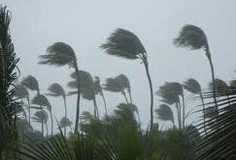
This condition which is common in the tropics is characterized by an absolute eosinophil count and associated with respiratory symptoms. The disease is prevalent in India, Sri Lanka, Malaysia, Pakistan, Bangladesh and west-central Africa.
Etiology
Microscopically the lesion is essentially inflammatory cell infiltration of several tissues. Lymphocytes and histiocytes are the initial invaders. Later to be replaced by eosinophilic bronchopneumonia, histiocytic infiltration of the interstitium and interstitial fibrosis. In some cases the lesions resemble granulomas with foreign body giant cells surrounded by mononuclear cells. The extent of lesion is probably related to the duration of the disorder. The histological changes are not pathognomonic for tropical eosinophilia, since similar lesions may result from allergy to several other allergens.
Clinical features
In the majority the onset is insidious and the patients come for treatment several months after the onset. Males are affected more than females. The severity of symptoms does not correlate with the eosinophil counts. Many patients with high eosinophilic counts may remain asymptomatic. In some cases the onset may be acute resembling influenza, bronchial asthma or gastro intestinal disturbances. The chronic form may present with exertional dyspnea, Vague ill health or asthmatic symptoms. Mild hemoptysis may occur. Auscultation over the chest may reveal evidence of bronchospasm with crepitations. Some cases present with mild fever, loss of weight, generalized lymphadenopathy, mild splenomegaly, and rarely bleeding tendencies. The absolute eosinophil count ranges from 2000-10,000/cmm. In some cases the total leukocyte count may go as high as 30-40,000/cmm and the eosinophils may form 70-90% of the total. All of them are mature eosinophils. The bone marrow shows infiltration by eosinophils and their precursors.
Skiagram of the Chest reveals diffuse fine mottling bilaterally in about 50% of cases. Rarely the radiological features may be unilateral or even localized is one lung. Pulmonary function tests show restrictive and obstructive features.
Diagnosis
Tropical eosinophilia should be suspected in all cases of respiratory disorders presenting with asthmatic symptoms of short duration. An absolute eosinophil count above 2000/cmm is essential for making the diagnosis. Tropical eosinopphilia has to be distinguished from other parasitic infections which cause lover degrees of esosinophilia. Loeffler’s syndrome, aspergillosis, allergic alveolitis, bronchial asthma, and pulmonary tuberculosis. In bronchial asthma also the eosinophils may be increased but the counts seldom reach the levels seen in tropical eosinophilia. In the latter, treatment is curative whereas in the former it is only palliative. Helminthic infections also cause lower levels of eosinophilia. These may be associated with respiratory symptoms. The eosinophilia clears up with de-worming.
The course of tropical eosinophilia is benign with remission and exacerbation extending over several months or years. Death is rare, though a few cases have been reported.
Treatment
Drug of choice is diethyl carbamazine given in a dose of 4-12 mg/kg/day for 10-14 days. In most of the cases the eosinophil count and symptoms subside promptly. Side effects are mild. These include headache, joint pains, anorexia, nausea, and vomiting. In few cases there may be slight aggravation of respiratory symptoms at the start of treatment. Such cases respond to bronchodilators or corticosteiods. Prolonged follow up is necessary, since the condition is likely to recur.

Source by Funom Makama
 Vitamin Agent The Health & Naturalistic Source
Vitamin Agent The Health & Naturalistic Source




